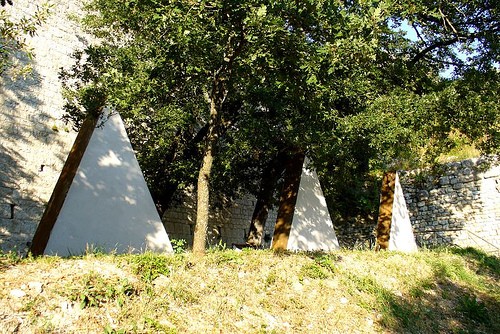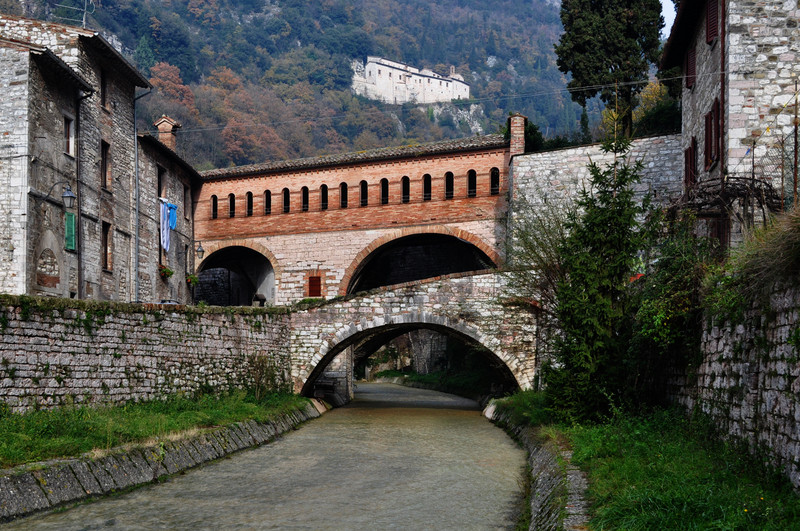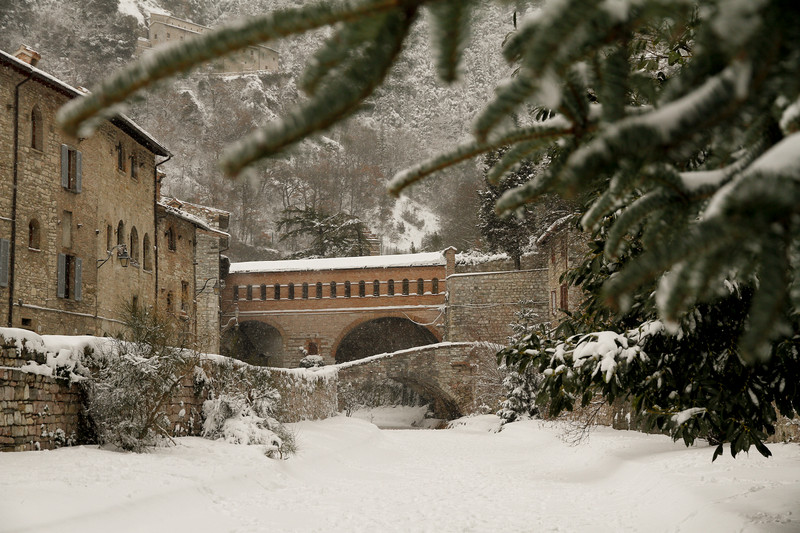
Ranghiasci Park
This post is also available in:
 Italiano (Italian)
Italiano (Italian)
“Giardino Ranghiasci”, now owned by the Province of Perugia, was born thanks to an English woman, Sarah Matilda Hobhouse, and her love for Count Francesco Ranghiasci Brancaleoni, her husband. In 1831, Count Ranghiasci bought a small vineyard with a vegetable garden – the first part of the land which would later become a park. The construction works of the latter began in 1841, continuing until 1848. Some neoclassical buildings were built, such as the small temple bearing the Ranghiasci coat of arms (bearing the motto “Virtus omnia vincit”), and the villa designed as the Ranghiasci Palace previously built in Perugia. Some ancient and medieval ruins were re-arranged, creating a path that evoked a typical English garden, with eye-catching sights and optical “telescopes”.
The death of the Marquis Ranghiasci in 1877 marked the beginning of a period of abandonment and neglect of the park; only in the 1980s, the Province of Perugia and the Municipality of Gubbio began the badly-needed restoration works.
Upon entering the park from the main gate, there are two columns that should have been standing, originally, near the terracotta statue of a Roman deity – now lost forever. After the covered bridge over the Camignano stream – and from its very narrow windows – visitors can see the medieval city and the route which winds through hairpin bends marked by columns and stone seats along the retaining walls; the succession of different tree species adds to this eye-catching panorama, with wonderful colour effects in each season.
Then, there’s a ramp of chestnut trees (Castanea sativa) and one of lime trees (Tilia spp.), before climbing the slope decorated with maples (Acer spp.) and the old stable where the avenue widens up into the garden of the temple; the latter features an elliptical in shape and is bordered by a boxwood hedge (Buxus sempervirens), with a central fountain.
The avenue leads to a ramp of holm oaks (Quercus ilex) and to a cottage; beyond the latter, there’s another ramp of horse chestnuts () which forms an evocative green “gallery” pointing towards the medieval tower of the church of Saint Lucas. The park is also traversed by another tree-lined avenue, called “Viale del Bosco Sacro” (“Sacred Wood Avenue”), decorated with several holm oaks.
This post is also available in:
 Italiano (Italian)
Italiano (Italian)
Contatti
Gubbio(PG)
Altre info
Apertura estiva - 1° aprile - 31 ottobre: 8.00-20.00. Apertura invernale - 1° novembre - 31 marzo: 9.00-17.00


